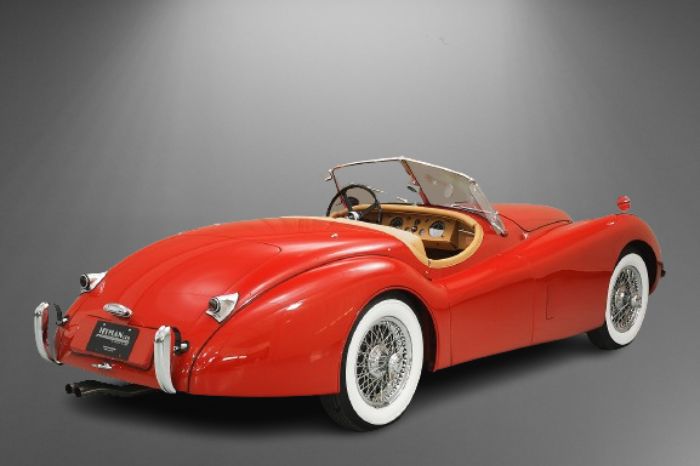1952 Jaguar XK120 History

The 1952 Jaguar XK120 wasn’t just a beautiful car; it was a product of innovation, competition, and a desire to redefine the sports car landscape.
Origins:
- Born from necessity: The XK120 was initially conceived as a testbed for the new XK engine, designed by Jaguar’s Chief Engineer William Heynes. The success of the engine led to the development of a full-fledged sports car.
- Unexpected Debut: Unveiled at the 1948 London Motor Show, the XK120 surprised everyone with its sleek design and impressive performance. The initial prototype was an open two-seater, later known as the “roadster” in the US.
- Aluminum to Steel: Due to high demand, Jaguar switched from the initial lightweight aluminum body to a more affordable steel construction in 1950. This decision ensured wider production and accessibility.
Evolution and Success:
- Expanding the Family: Recognizing the diverse preferences of enthusiasts, Jaguar introduced the fixed-head coupe (FHC) in 1951 and the drophead coupe (DHC) in 1953, offering options beyond the open roadster.
- Racing Prowess: The XK120 wasn’t just fast on paper; it proved its mettle on the racetrack. Victories in races like the 24 Hours of Le Mans and numerous endurance events cemented its reputation as a formidable competitor.
- Global Recognition: The XK120 transcended borders, achieving immense popularity not just in Britain but also in the US and other countries. Its combination of performance, style, and relative affordability made it a desirable choice for many.
The End of an Era:
- Production Run: The XK120’s production ended in 1954, with over 12,000 units manufactured. It paved the way for its successors, the XK140 and XK150, but the original XK120 remains a cherished icon in automotive history.
- Enduring Legacy: The XK120’s influence extends far beyond its production years. Its design elements inspired future Jaguar models, and its spirit of innovation continues to be celebrated by enthusiasts worldwide.